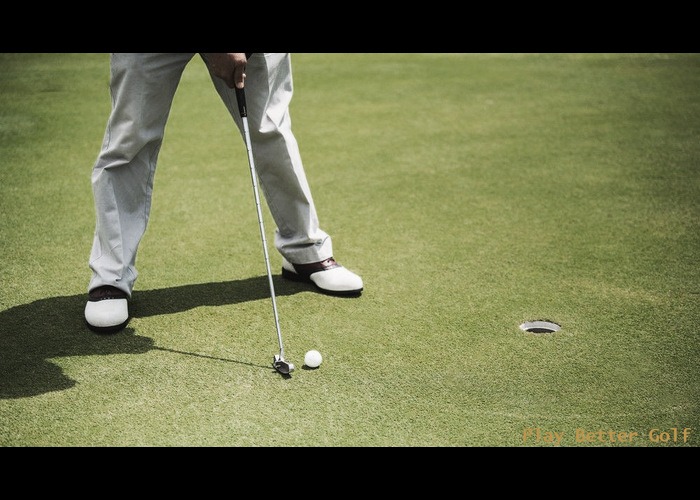
A proper golf swing is essential for every golfer, regardless of their skill level. It not only determines the accuracy and distance of your shots but also plays a crucial role in preventing injuries. Without a solid and consistent swing, your game will suffer, and you’ll struggle to achieve your desired results on the course.
A proper golf swing involves a complex combination of body movements and mechanics that can seem overwhelming to beginners. However, understanding the fundamentals and practicing regularly can help you develop a reliable swing that will improve your overall game. In this step-by-step guide, we will break down the mechanics of a golf swing and provide you with practical tips to perfect your technique.
Understanding the mechanics of a golf swing
To develop a proper golf swing, it’s important to understand the mechanics behind it. A golf swing consists of several key components that work together to generate power and control. These components include grip, stance, backswing, downswing, impact, and follow-through.
The grip is the foundation of your swing. It should be firm but not too tight, allowing for a natural release of the clubhead through impact. The stance is the position of your feet and body in relation to the ball. It should be balanced, with your weight evenly distributed between both feet, and aligned with the target line.
The backswing is the initial movement of the club away from the ball. It should be smooth and controlled, with the wrists hinging naturally as the club reaches the top of the backswing. The downswing is the transition from the backswing to impact. It should be initiated by the lower body, transferring weight from the back foot to the front foot, and generating power and speed. The impact is the moment of contact between the clubhead and the ball. It should be a crisp and solid strike, with the clubface square to the target. Finally, the follow-through is the continuation of the swing after impact. It should be balanced and unrestricted, with the body rotating towards the target.
Common mistakes in a golf swing
Even experienced golfers can fall into bad habits and make common mistakes in their swings. These mistakes can lead to inconsistent shots, loss of power, and increased risk of injury. By identifying and addressing these mistakes, you can improve your swing and take your game to the next level.
One common mistake is gripping the club too tightly. A tight grip restricts the natural movement of the wrists and can result in a lack of clubhead speed and control. Another mistake is an improper stance, with the feet too close together or too far apart. This can affect your balance and make it difficult to generate power.
11 Common Golf Swing Mistakes & Their Simple Fixes
A faulty backswing is another common mistake. This can include overswinging, where the club goes too far back, or a lack of rotation in the upper body. Both of these can lead to a loss of control and accuracy. Similarly, a poor downswing can result in inconsistent shots and a lack of power. It’s important to initiate the downswing with the lower body and maintain a smooth transition from backswing to impact.
Step 1: Grip and stance
The first step in perfecting your golf swing is to master the grip and stance. A proper grip allows for a natural release of the clubhead through impact, while a balanced stance provides a solid foundation for your swing.
To achieve a proper grip, start by placing the club in your left hand (for right-handed golfers) with the clubface square to the target. The handle should run diagonally across the base of your fingers, with your left thumb resting on the right side of the grip. Next, place your right hand on the club, with the pinky finger overlapping the index finger of your left hand. Both thumbs should point towards your right shoulder. The grip should be firm but not too tight, allowing for a natural release of the clubhead through impact.
Your stance is equally important in creating a solid foundation for your swing. Start by positioning your feet shoulder-width apart, with your weight evenly distributed between both feet. The ball should be positioned in line with your left heel (for right-handed golfers) and slightly forward in your stance. Your knees should be slightly flexed, and your back straight. This balanced stance will help you maintain stability throughout your swing and generate power.
Step 2: Backswing and club positioning
Once you have a solid grip and stance, it’s time to focus on the backswing and club positioning. The backswing is the initial movement of the club away from the ball, and it sets the stage for the rest of your swing.
Start by taking the club back with your hands and arms, while maintaining a relaxed and controlled grip. As you swing back, allow your wrists to hinge naturally, creating a 90-degree angle between the clubshaft and your left arm (for right-handed golfers). This will help you generate power and create a wide swing arc.
At the top of your backswing, the club should be parallel to the ground and pointing towards the target line. Your left arm should be extended, and your weight should be shifted to your back foot. This position sets you up for a powerful downswing and a solid strike at impact.
Step 3: Downswing and impact
The downswing is where the power and speed of your swing are generated. It’s important to initiate the downswing with your lower body, transferring weight from your back foot to your front foot, and allowing your arms and hands to follow naturally.
Start by shifting your weight towards your front foot while maintaining a balanced and controlled motion. As you swing down, allow your hips to rotate towards the target, creating a powerful coil and generating energy. This rotation will help you generate speed and power through impact.
At impact, your hands should be slightly ahead of the ball, with the clubface square to the target. This position ensures a solid strike and maximizes the transfer of energy from the clubhead to the ball. Focus on maintaining a smooth and controlled motion, allowing the club to release naturally through impact.
Step 4: Follow-through and finish
The follow-through and finish are often overlooked but are crucial components of a proper golf swing. The follow-through is the continuation of your swing after impact, and it should be balanced and unrestricted.
As you swing through impact, allow your body to rotate towards the target, following the natural path of the club. Your weight should shift from your front foot to your back foot, and your arms should extend towards the target. This extension and rotation will help you maintain balance and control throughout your swing.
The finish is the final position of your swing, and it should be balanced and relaxed. Your body should be facing the target, with your weight on your front foot and your back foot up on the toe. Your arms should be extended, and your club should be high and over your left shoulder (for right-handed golfers). This finish position indicates a solid and well-executed swing.
Practicing your golf swing
Perfecting your golf swing takes time and practice. It’s important to dedicate regular practice sessions to fine-tuning your technique and ingraining the correct movements into muscle memory. Here are a few tips to help you make the most of your practice sessions:
- Start with the basics: Focus on mastering the grip, stance, and posture before moving on to more advanced aspects of your swing.
- Break it down: Practice each step of the swing separately, focusing on one aspect at a time. This will help you identify and correct any weaknesses or inconsistencies.
- Use training aids: There are many training aids available that can help you improve your swing mechanics. These can include alignment sticks, impact bags, and swing trainers. Experiment with different aids to find what works best for you.
- Film your swing: Recording your swing on video can provide valuable feedback and help you identify areas for improvement. Compare your swing to professional golfers or seek the guidance of a golf coach to analyze your technique.
- Practice with purpose: Instead of mindlessly hitting balls at the driving range, set specific goals for each practice session. Focus on improving a particular aspect of your swing or working on a specific shot shape.
Remember, consistency is key when it comes to perfecting your golf swing. Regular practice and attention to detail will help you develop a reliable and effective technique.
Common problems and how to fix them
Even the best golfers encounter common problems with their swings from time to time. Identifying these problems and understanding how to fix them can help you overcome obstacles and improve your game. Here are a few common issues and their solutions:
- Slicing: A slice is a shot that curves excessively from left to right (for right-handed golfers). It is usually caused by an open clubface at impact or an out-to-in swing path. To fix a slice, focus on closing the clubface at impact and swinging more from the inside. Practice drills that promote an inside-out swing path and ensure that your grip is neutral or slightly stronger.
- Hooking: A hook is a shot that curves excessively from right to left (for right-handed golfers). It is usually caused by a closed clubface at impact or an in-to-out swing path. To fix a hook, focus on keeping the clubface square at impact and swinging more from the outside. Practice drills that promote a square-to-square swing path and ensure that your grip is neutral or slightly weaker.
- Inconsistent contact: Inconsistent contact occurs when you hit the ball inconsistently on the clubface, resulting in varying distances and accuracy. This can be caused by improper ball position, an inconsistent swing path, or a lack of focus. To improve contact, ensure that the ball is positioned correctly in your stance, practice swinging along a consistent swing path, and maintain focus on the ball throughout your swing.
- Lack of power: If you feel like you’re not generating enough power in your swing, it could be due to a lack of rotation in your hips and torso or a lack of lag in your wrists. To increase power, focus on initiating the downswing with your lower body and allowing your hips and torso to rotate towards the target. Additionally, work on creating lag in your wrists by maintaining a firm left wrist (for right-handed golfers) at the top of your backswing and releasing it through impact.
Conclusion: Mastering your golf swing
Mastering your golf swing is a continuous journey that requires dedication, practice, and attention to detail. By understanding the mechanics of a golf swing and focusing on the key components, you can develop a reliable and effective technique that will improve your overall game.
Remember to start with the basics, such as grip and stance, and gradually progress to more advanced aspects of your swing. Practice regularly and with purpose, focusing on specific goals and areas for improvement. Seek feedback from professionals or use video analysis to identify and correct any weaknesses or inconsistencies in your swing.
With time and effort, you will be well on your way to perfecting your golf swing and enjoying improved accuracy, distance, and consistency on the course. So, grab your clubs, head to the driving range, and start working on your swing today!
Please wait next page is
Loading
FAQs: Perfecting Your Golf Swing
1. What is the importance of a proper golf swing?
- A proper golf swing is crucial for accuracy, distance, and consistency in your shots. It helps you achieve better control over the ball and ultimately leads to improved performance on the golf course.
2. How can I improve my golf swing as a beginner?
- As a beginner, focus on the fundamentals: grip, stance, posture, and alignment. Seek guidance from a professional instructor and practice regularly to build a solid foundation for your swing.
3. How can I fix a slice in my golf swing?
- To fix a slice, work on your grip and stance to promote a more square clubface at impact. Focus on an inside-out swing path and ensure your body rotation is balanced.
4. What are some common mistakes golfers make in their swings?
- Common mistakes include over-swinging, poor weight distribution, improper grip, and lack of body rotation. It’s essential to address these issues for a more consistent and effective swing.
5. How do I generate power in my golf swing?
- Power in a golf swing comes from a combination of factors, including proper body rotation, weight transfer, and wrist release. Engage your core muscles and practice a fluid, controlled motion.
6. What role does grip play in the golf swing?
- The grip is essential as it’s the only connection between you and the club. A proper grip ensures control over the clubface and helps square it at impact, leading to more accurate shots.
7. How do I maintain balance during my golf swing?
- Balance is crucial for a consistent and powerful swing. Practice a stable stance, distribute your weight evenly, and focus on maintaining a centered pivot throughout the swing.
8. Can I perfect my golf swing without professional instruction?
- While it’s possible to make improvements on your own, professional instruction provides valuable feedback and tailored guidance. A qualified instructor can identify specific areas for improvement and offer personalized drills.
9. How can I practice my golf swing effectively?
- Effective practice involves a combination of drills, video analysis, and on-course play. Focus on quality over quantity, and work on specific aspects of your swing in a deliberate manner.
10. How long does it take to see noticeable improvements in my golf swing?
- The timeline for improvement varies depending on factors such as your starting point, practice frequency, and individual learning curve. With consistent practice and focused effort, you can expect to see gradual improvements over time.
11. How can I prevent injuries while working on my golf swing?
- To prevent injuries, ensure you warm up properly before practice or play. Pay attention to your body mechanics and avoid over-exertion. It’s also recommended to incorporate strength and flexibility exercises specific to golf.
12. Are there any advanced techniques for refining my golf swing?
- Advanced techniques may include fine-tuning nuances like clubface angle at impact, optimizing launch angle, and developing a more intricate understanding of shot shaping. These are best explored with the guidance of an experienced coach.




